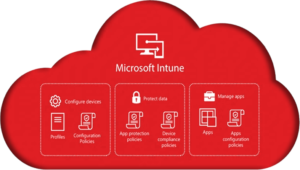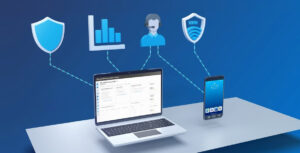One of the System Center Configuration Manager (SCCM) 2007 site roles is the State Migration Point (SMP). You can store user data on the SMP when you are installing a new operating system on an existing computer (called Refresh or Wipe-and-Load migration) or when you are replacing the user’s machine with a new one. The user state data is saved to the SMP before the target system’s hard disk is wiped out, and the data is restored after the new operating system is installed. The article below provides information on how to configure a state migration point.
https://technet.microsoft.com/en-us/library/bb693655.aspx
The User State Migration Tool (USMT) version 4, which is part of the Windows Automated Installation Kit (WAIK) for Windows 7, introduced a new feature called hard-link migration. This feature allows you to save the user state data on the local drive of a computer that is getting a new operating system in a Refresh scenario as long as there is 250 MB of free space on the hard disk. A directory of hard links to user files is created and this data is protected from the wiping of the disk. After the new operating system is installed, the hard links are remapped to the appropriate locations. Because files are not duplicated on the local disk or copied over the network to a SMP, you can save a considerable amount of time when migrating users to Windows 7.
USMT v.4 was released after SCCM 2007 was so out of the box SCCM 2007 does not support hard-links. However, SP2 for SCCM 2007 added support for USMT v.4 and the hard-link feature. The following article provides step-by-step instructions on how to use the hard-link feature in SCCM 2007 SP2.





